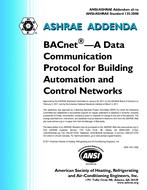The pressurization of stair shafts as a means of prov:iding smoke-free escape routes during a fire has received much attention in recent years by a number of investigators and cqde authorities (1-11). This method has special application to high-rise buildings as evacuation time can be long and fire fighting difficult; hence safe vertical passageways must be assured for the duration of a fire. It entails injecting outside air into the stair shaft to establish flow from it to adjacent spaces, thus preventing entry of smoke into the stair shaft as well as dispersing any smoke within it.
The design of a stair pressurization system requires information on the airtightness of walls and doors of stair shafts and on the resistance to air flow through the stair shaft itself. The tests described in this paper were conducted to obtain this information for two high-rise buildings. It must be anticipated that several stair doors will be open during a fire to permit evacuation and fire fighting. This reduces the pressures in the stair shaft and can adversely affect the performance of the smoke control system. The effect of having some stair doors open was also checked, therefore, as well as the differences that occur when air is injected at the top or bottom of the shaft.
Citation: ASHRAE Transactions, Volume 80, Part 2, Montreal, QC
Product Details
- Published:
- 1974
- Number of Pages:
- 14
- File Size:
- 1 file , 830 KB
- Product Code(s):
- D-MO-2319


